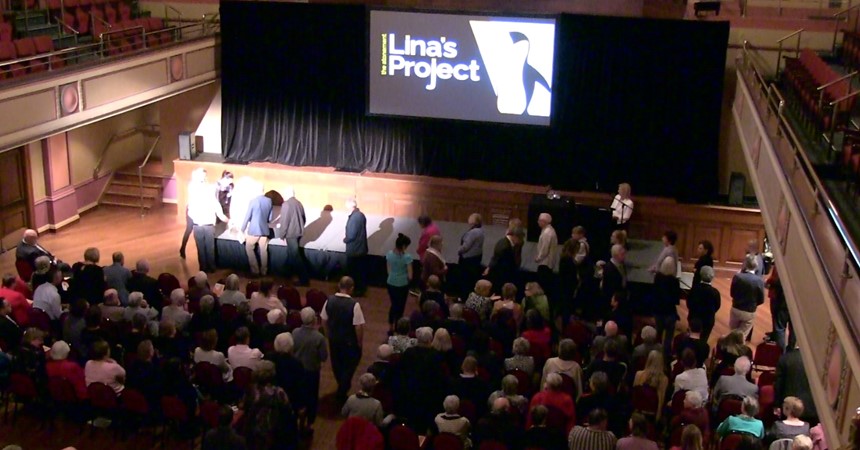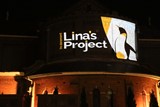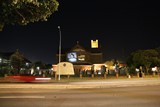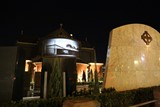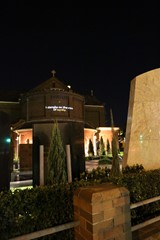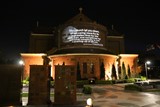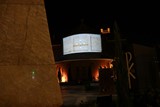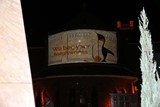Lina, a victim of sexual abuse at the hands of a member of clergy in the Catholic Diocese of Maitland-Newcastle, devised The Atonement: Lina’s Project as a way of rebuilding her own trust in the church and bringing some healing to the “average, ordinary human beings” whose skin had been “burnt, scorched and blistered” by the actions and inactions of the church.
Lina hoped that by admitting its criminal history and cover-ups very publicly, first at the launch event at Newcastle City Hall and then by projecting the audio-visual presentation onto the façade of Sacred Heart Cathedral for a week, the diocese might take a step towards atonement with the community.
To find a measure of atonement, first people need to know about the event and if they can’t attend, hear about it from others. While there is no denying the vital role local media has played in bringing the crimes of this diocese into the consciousness of the community and seeing justice done for so many, unfortunately, no local media were present at the launch event. This meant that Lina’s vision may not have reached as many within the community as she hoped. As far as I know The Atonement: Lina’s Project was the first time anywhere in the world that a Catholic diocese has facilitated a project conceived by a victim in this way. It was clearly a newsworthy event.
Promisingly though, the audio-visual presentation has already been viewed over 1100 times, so clearly, word about Lina’s Project is spreading throughout the community and people are engaging with Lina’s message. You can watch it by visiting the Lina’s Project website. The projection onto Sacred Heart Cathedral also saw a significant number of people stopping by to watch each evening, with reports of people travelling some distance to see it.
So what happened at the event and what did people who were there have to say about it?
Around 500 people were in attendance on Friday 15 September. Victims, survivors, their families and friends, clergy, religious, principals, teachers, diocesan staff and many others from the community, and around Australia sat together in the Concert Hall. The mood on the night was, as Pat Feenan described it, “quiet, respectful and sad, which was exactly as it should be”.
The MC, ABC journalist and presenter, Juanita Phillips, welcomed all who had gathered and explained how Lina’s Project came to be. Lina wanted the church to acknowledge the devastation caused by child sexual abuse by clergy, religious and other church personnel and needed the diocese to beg for forgiveness.
A 16 minute audio-visual presentation was shown. The majority of this was the naming of perpetrators of abuse in this diocese, as well as those who concealed their crimes, but Lina’s voice and words anchored the film and, along with quotes from other victims and survivors who were happy to lend their voice to the project, gave the presentation its compass. The audio-visual presentation was the crux of the event and was very challenging to watch.
The hush that enveloped the crowd both during the presentation and at its conclusion was moving, to say the least. One person who was present described the event as “beautifully sensitive and heartbreakingly truthful”.
After a couple of minutes of silence people were invited to attach a piece of egg ‘shell’ to an egg on the stage. This ritual tied in to the symbol of the King penguin and the egg, which was devised by Lina and used to promote the event, and also played a key role in the presentation.
The idea was that once pieces were attached to the egg it would be clear that the shell was replaced, but still broken. The ritual symbolised our community – we can come together and support each other, but must always remain aware of the brokenness of those affected by abuse.
It was incredible to witness so many take part in this ritual and very clear that Lina’s Project had struck a chord with those who were there.
Guests then gathered to share some refreshments and talk with each other. Some people chose to write in books that had been placed around the room. The books were a means by which people could share their thoughts on the event, write messages of support for victims and survivors and make suggestions for other initiatives that the diocese could consider.
Many acknowledged Lina’s bravery in conceiving the event. One person wrote, “Thank you Lina for calling our diocese to a deeper sorrow and determination to help in the healing of all our community.” Chairman of the Clergy Abused Network, Bob O’Toole, described the presentation as “difficult to watch but very necessary if healing is to occur.” Deputy NSW Ombudsman and Community and Disability Services Commissioner, Steve Kinmond, and Assistant Ombudsman, Julianna Demetrius, said that Lina’s Project was “a wonderful example for the nation”. Others wrote messages of support to victims saying “our hearts are aching for you” and “I hope in some small way you know your community hopes we can be part of your healing.”
As a member of the team who worked on this project on behalf of Lina and the diocese and also as someone who consulted regularly with other victims and survivors, I was relieved that Lina’s Project brought some measure of vindication for people who have been desperately trying to get the diocese to acknowledge its criminal history and cover-ups for so long. There were a lot of brave people in that Concert Hall (and watching the live stream) – a lot of understandably wary and sceptical human beings. But the fact that they put themselves in that vulnerable space spoke volumes about the human heart’s ability to hope; to believe that maybe this time something positive would happen. There was also great support there from the community; one that has been impacted immeasurably by the “obscenities”, as Lina referred to them, revealed in the Special and Royal Commissions. Apologies have been made many times, but as Bishop Bill acknowledged in the program, “a formal apology can never really be adequate…but it still needs to be said over and over.” The diocese can beg for forgiveness, but it will be its actions moving forward that will reveal the genuineness of its intent.
It is clear to me that we need to, as a community, dive deep into victims’ stories and truly listen to what they are saying. Each person’s story is unique. Each person’s healing is subjective. Lina, by being brave enough to trust the diocese to facilitate her ideas, allowed the diocese to take a positive step in the right direction. The event and the audio-visual presentation could never be all things to all people, but they are a powerful statement of acknowledgement and atonement. I truly hope that Lina’s soul and spirit have found some solace.
The most important thing for the diocese is to stay true to the aims of Lina’s Project. On the night, Bishop Bill, on behalf of the diocese, made some commitments to future initiatives. In 2018 the diocese will consult with survivors and the community to plan a permanent memorial in the grounds of Sacred Heart Cathedral. From 2018, September 15 each year will be a perpetual day of remembrance and the diocese will also be working with schools within the region, particularly those that were sites of abuse, to plan events of acknowledgement. There is a form available on the Lina’s Project website www.linasproject.com.au and everyone is invited to share their ideas and suggestions for other events and projects that may help others and the community find a measure of healing. These ideas will be received by the Event Project Manager and will be published on the Lina’s Project website early in 2018. Listening and collaborating will be the key to bringing atonement. There is still so much more to do.
Without Lina, none of this would have been possible. Her creativity knows no bounds. She is an artist, photographer, teacher and writer. A lover of the ocean, animals, nature, wit and intellect. She shared her blog with me which is like opening a window into her soul. I wanted to share something of her beautiful writing with you. It is about love and hope, “the seabird’s song”.
THE SEA BIRDS
(love and hope)
The chains that hold a seabird to the ground,
can they long be shackled
about his tiny feet?
Feet meant to run on sandy shores
or the beach of time eternal.
You have not heard of chains upon a bird?
But surely, this must be so.
Have you never walked the beach of time,
gazed out upon its endless seas?
And were there, at times
No seabirds there?
They are perhaps shackled to the ground.
The chains of heartbreak
A burden,
beyond the will to fly.
It is also true that some may die,
For can you take away the flight of such a bird
who knows only,
the freedom of the air flowing over wings of gold and silver:
The surf of happiness, the tides of destiny
Sliding to and fro
under his watchful eye.
He must surely die.
But there is a key
A key of life
to unlock the bonds of death.
It is hope.
For hope is love,
the seabird’s song.
Is anything so free
as the birds
that sail along the sea?
Is there not life, special, beautiful,
sailing there on intrepid wings?
I shall find my strength in the seabird’s song
I shall loose the bonds of all the birds I find,
destined there to death no more.
I love the seabirds,
And when I look out on the sea of time
There,
Sailing in their greatest majesty,
They shall call to me, a song of hope
A song of love
